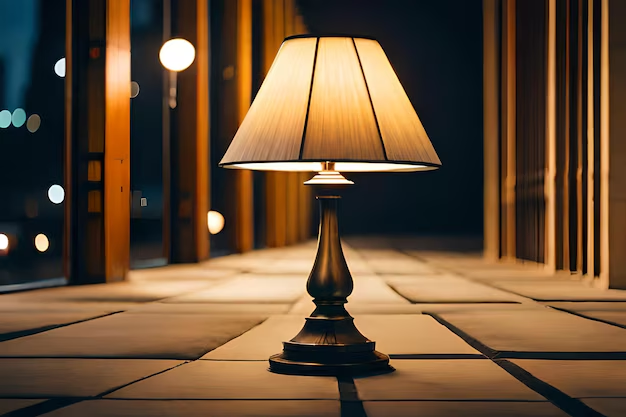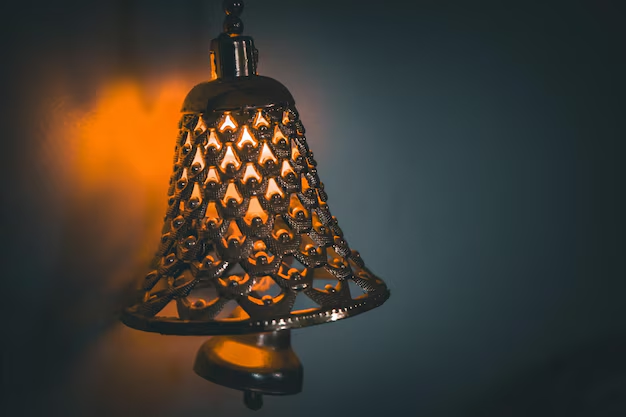In the ever-evolving world of interior design, lighting remains a crucial element that shapes the atmosphere, functionality, and aesthetics of a space. Among the various lighting solutions available, heat lamps have emerged as a popular choice for those looking to add both warmth and style to their homes. Traditionally used for functional purposes, heat are now being incorporated into modern interiors as stylish and versatile design features. Whether you’re looking to enhance the coziness of your living room or add a modern touch to your outdoor spaces, heat lamps offer a unique blend of functionality and design. In this blog, we’ll explore the latest interior design trends and offer tips on how to incorporate heat lamps into your home.
The Rise of Heat Lamps in Interior Design
Heat lamps have come a long way from their origins in industrial and commercial settings. Today, they are being reimagined as sleek and stylish fixtures that can complement a wide range of interior design styles. The growing popularity of heat in residential interiors can be attributed to several factors:
- Dual Functionality: Heat lamps not only provide warmth but also serve as stylish lighting fixtures that can enhance the overall design of a room.
- Versatility: Available in various designs, sizes, and finishes, heat lamps can be integrated into different spaces, from cozy living rooms to chic outdoor patios.
- Energy Efficiency: Modern heat lamps are designed to be energy-efficient, providing warmth without significantly increasing energy consumption.
1. Minimalist and Modern Interiors
One of the biggest trends in interior design today is the minimalist approach, which emphasizes simplicity, clean lines, and a neutral color palette. Heat lamps can seamlessly fit into this design philosophy, providing both function and form without overwhelming the space.
How to Incorporate Heat Lamps:
- Recessed Ceiling Heat Lamps: For a sleek and unobtrusive look, consider recessed ceiling heat lamps. These fixtures can be installed flush with the ceiling, providing warmth without taking up visual space. They work particularly well in minimalist living rooms, bathrooms. Or kitchens where a clean, clutter-free aesthetic is desired.
- Slim Wall-Mounted Heat Lamps: Wall-mounted heat with a slim profile can be used in minimalist interiors to add warmth without detracting from the simplicity of the design. Place them above seating areas, along hallways, or near entryways to create a warm and welcoming atmosphere.
- Neutral Tones and Materials: Choose heat in neutral tones such as black, white, or metallic finishes to complement the minimalist color palette. Opt for materials like brushed steel or matte finishes that blend seamlessly with modern decor.
2. Industrial Chic Design
Industrial design, characterized by exposed brick walls, metal accents, and raw materials, continues to be a popular trend. Heat lamps with an industrial edge can add warmth and texture to spaces that embrace this aesthetic.
How to Incorporate Heat Lamps:
- Exposed Bulb Heat Lamps: Heat lamps with exposed bulbs and metal cages are perfect for adding a rugged, industrial feel to your space. These can be mounted on walls or ceilings in living rooms, kitchens, or dining areas to create a focal point that complements the industrial decor.
- Freestanding Industrial Heat Lamps: For a bolder statement, consider freestanding heat with an industrial design. Look for models with metal bases, exposed hardware, and adjustable arms. These lamps can be placed in living rooms or loft spaces to enhance the industrial vibe while providing functional warmth.
- Mixing Materials: Industrial design often incorporates a mix of materials such as wood, metal, and concrete. Choose heat lamps that feature a combination of these materials to tie the room together. For example, a metal heat lamp with a wooden base can add warmth and texture to an industrial space.
3. Scandinavian Design
Scandinavian design is known for its emphasis on coziness, simplicity, and functionality. Heat lamps can play a key role in enhancing the hygge (a Danish term for coziness and comfort) factor in Scandinavian-inspired interiors.
How to Incorporate Heat Lamps:
- Wood and Metal Heat Lamps: In Scandinavian interiors, natural materials like wood are often paired with clean. Modern lines. Choose heat that feature a combination of wood and metal for a look that is both warm and contemporary. These lamps can be used in living rooms, bedrooms, or dining areas to create a cozy atmosphere.
- Corner Heat Lamps: Maximize space and warmth by placing corner heat lamps in cozy nooks or reading corners. These lamps can provide focused warmth while adding a touch of Scandinavian simplicity to the space.
- Soft Lighting: Opt for heat with dimmable features to create soft, ambient lighting that enhances the cozy feel of your space. Pair these with soft textiles like wool blankets and plush cushions to complete the Scandinavian look.
How to Incorporate Heat Lamps:
- Freestanding Patio Heaters: Freestanding patio heaters are ideal for outdoor living spaces, providing both warmth and style. These heaters come in various designs, from sleek and modern to rustic and traditional. Place them around seating areas or dining tables to create a warm and inviting atmosphere for outdoor gatherings.
- Wall-Mounted Outdoor Heat Lamps: For smaller patios or balconies, wall-mounted outdoor heat can provide targeted warmth without taking up floor space. Choose weather-resistant finishes and materials that can withstand the elements while still looking stylish.
- String Lights with Heat Lamps: Combine the charm of string lights with the functionality of heat by incorporating heat-emitting string lights into your outdoor decor. These lights can be draped over pergolas, around patios, or along garden paths to create a magical and warm outdoor setting.
5. Transitional Design
Transitional design blends traditional and contemporary elements, creating a balanced and timeless look. Heat lamps can be incorporated into transitional spaces to add both warmth and style without clashing with the overall design.
How to Incorporate Heat Lamps:
- Traditional-Style Heat Lamps: Choose heat with classic designs. Such as those with ornate details or traditional shapes. To complement the traditional elements of a transitional space. These can be placed in living rooms, dining rooms, or entryways to add a touch of warmth while maintaining the elegance of the space.
- Contemporary Finishes: Pair traditional-style heat with contemporary finishes like polished nickel or matte black to create a seamless blend of old and new. This approach allows the heat to fit comfortably within a transitional interior while adding a modern edge.
- Layered Lighting: In transitional design, layered lighting is key to creating a balanced and inviting atmosphere. Use heat lamps as part of a layered lighting scheme that includes chandeliers, sconces, and floor . This will ensure that your space is both well-lit and warm, enhancing the overall comfort and style.
6. Eco-Friendly and Sustainable Design
As sustainability becomes increasingly important in interior design, more homeowners are looking for eco-friendly solutions that reduce their environmental impact. Heat lamps, particularly those designed with energy efficiency in mind, can be a valuable addition to sustainable interiorsonal style, adding both warmth and artistic flair to your home.
How to Incorporate Heat Lamps:
- Commission a Custom Piece: Work with a designer or artisan to create a custom heat lamp that fits your space perfectly. Whether it’s a sculptural floor lamp or a hand-blown glass pendant. A custom heat lamp can serve as a functional piece of art in your home.
- Statement Pieces: Use a custom heat lamp as a statement piece in a room. Place it in a prominent location where it can be admired for both its design and functionality. Custom heat lamps are perfect for living rooms. Dining areas, or entryways where they can set the tone for the entire space.
- Personalize with Color and Finish: Custom heat lamps allow you to choose the exact color. Finish, and materials that best suit your interior design. This level of personalization ensures that your heat lamp will be a perfect fit for your home, both aesthetically and functionally.
Conclusion
Incorporating heat lamps into your interior design is a great way to add warmth, style, and functionality to your home. Whether you’re embracing the minimalist trend. Enhancing an industrial space. Or creating a cozy outdoor retreat, there are heat lamp options to suit every style and need. As you explore the possibilities, consider how these versatile lighting solutions can enhance your living spaces. Making them more comfortable, stylish, and inviting.


